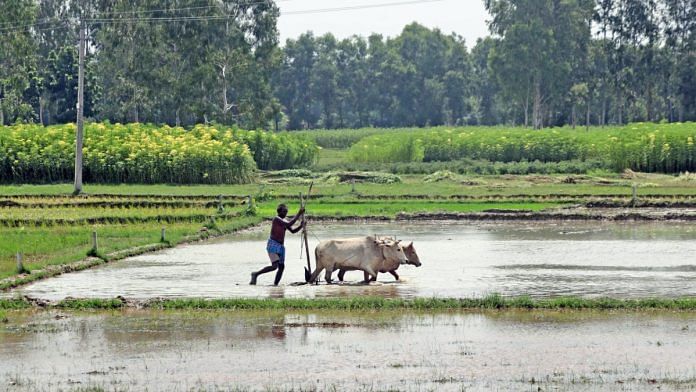New Delhi: Madhya Pradesh’s economy has grown by about 6.6 percent per annum on average between 2011-12 and 2021-22, the fourth highest rate of growth among states with a state GDP (GSDP) of Rs 1 trillion and above during this period, an analysis by ThePrint shows.
This high rate of growth, however, has not made it an industrial state. Instead, Madhya Pradesh is now more agrarian and fares poorly on several socio-economic and demographic indicators in comparison to five neighbouring states and the national average.
The Ministry of Statistics and Programme Implementation calculates state domestic products (output of individual states) using a base year of 2011-12. Since the base price on which real/inflation-adjusted growth is calculated is not available for states for the period before 2011-12, ThePrint’s analysis is limited to the period between 2011-12 and 2021-22.
During this period, Madhya Pradesh’s Gross State Domestic Product (overall value of goods and services produced in the state) grew by 6.65 percent on average per annum — the fourth highest rate of growth after Gujarat (8.35 percent), Karnataka (7.33 percent) and Haryana (6.7 percent).
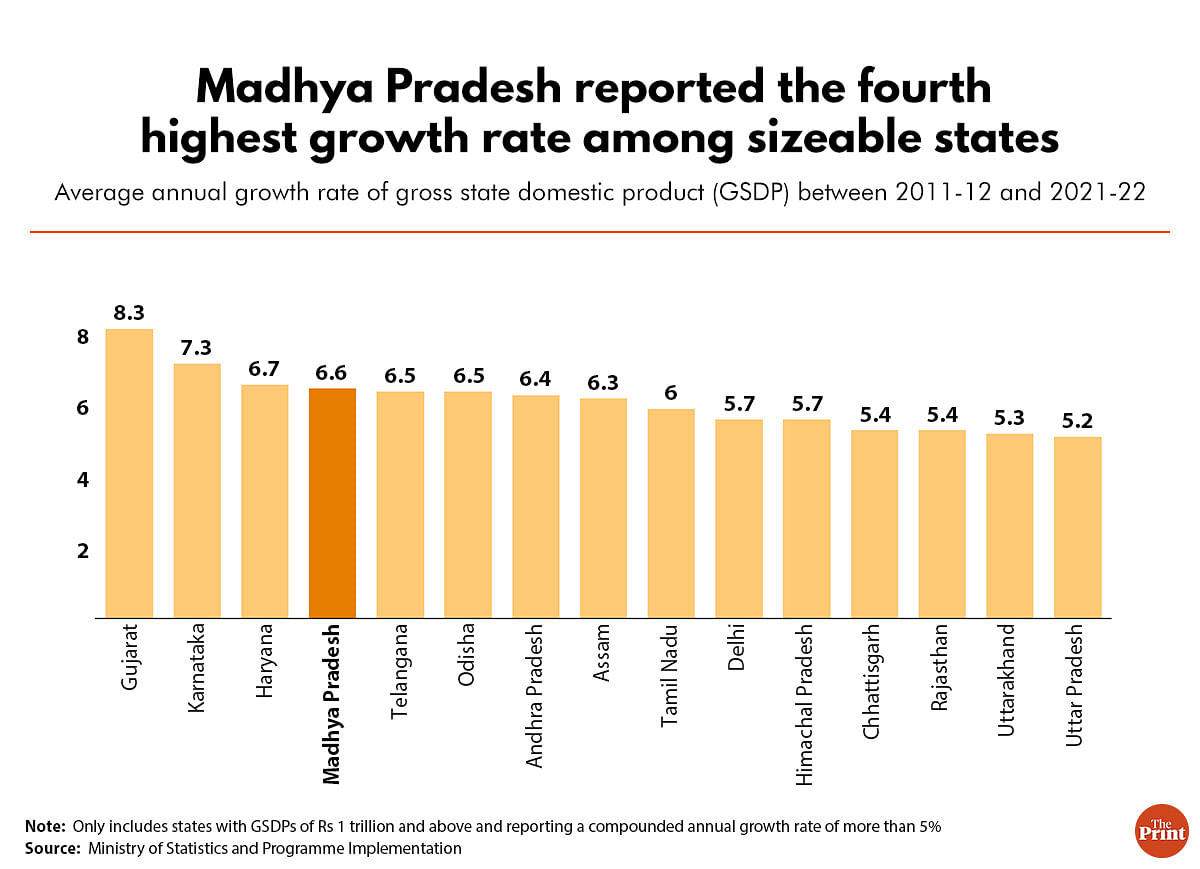
When compared to its five neighbours, the state’s GSDP growth is second only to Gujarat’s, with Rajasthan (5.45 per cent), Chhattisgarh (5.41 per cent), Uttar Pradesh (5.22 per cent) and Maharashtra (4.71 per cent) trailing behind.
But this growth is not reflected in Madhya Pradesh’s positioning in terms of per capita income. Of the 21 states with GSDPs of Rs 1 trillion and above, it was ranked 18th in 2011-12 — above Chhattisgarh, Bihar and Uttar Pradesh. Since then, with a per capita income of Rs 1.2 lakh, the state was able to climb only two steps to reach the 16th rank by 2021-22.
The national average per capita income, according to the revised estimate by MoSPI, is Rs 1.48 lakh.
Among its neighbours, Madhya Pradesh fares better than Chhattisgarh and Uttar Pradesh on this count, while Gujarat, Maharashtra and Rajasthan continue to be ranked higher.
And though agricultural growth has brought more income to the state, this doesn’t necessarily equate to all-round development.
Vikash Vaibhav, assistant professor of economics at Sonepat-based OP Jindal Global University, says, “Based on historical developmental experiences, the path of economic development has been led by industry or services, and not agriculture. It is widely accepted that agricultural productivity cannot grow as fast as that of industry or services. As a result, agricultural wages, and the livelihood of people dependent on it, cannot rise any faster.”
He adds, “Lower industrialisation in the home state also means skilled, or even semi-skilled, labour has no choice but to migrate to other industrial centres in search of better opportunities.”
Also Read: Low poverty & inequality, yet Punjab can’t afford to rest on its laurels. Urban poverty has risen
Madhya Pradesh’s growth lies in grains
The question now arises: why is Madhya Pradesh still not relatively prosperous despite having the fourth highest rate of growth in terms of GSDP? The answer lies in the path of growth the state has opted for with its focus on agriculture.
Data shows that Madhya Pradesh is now more reliant on agriculture for its income than it was a decade ago. Compared to its neighbours, it has witnessed phenomenal agricultural growth since 2011.
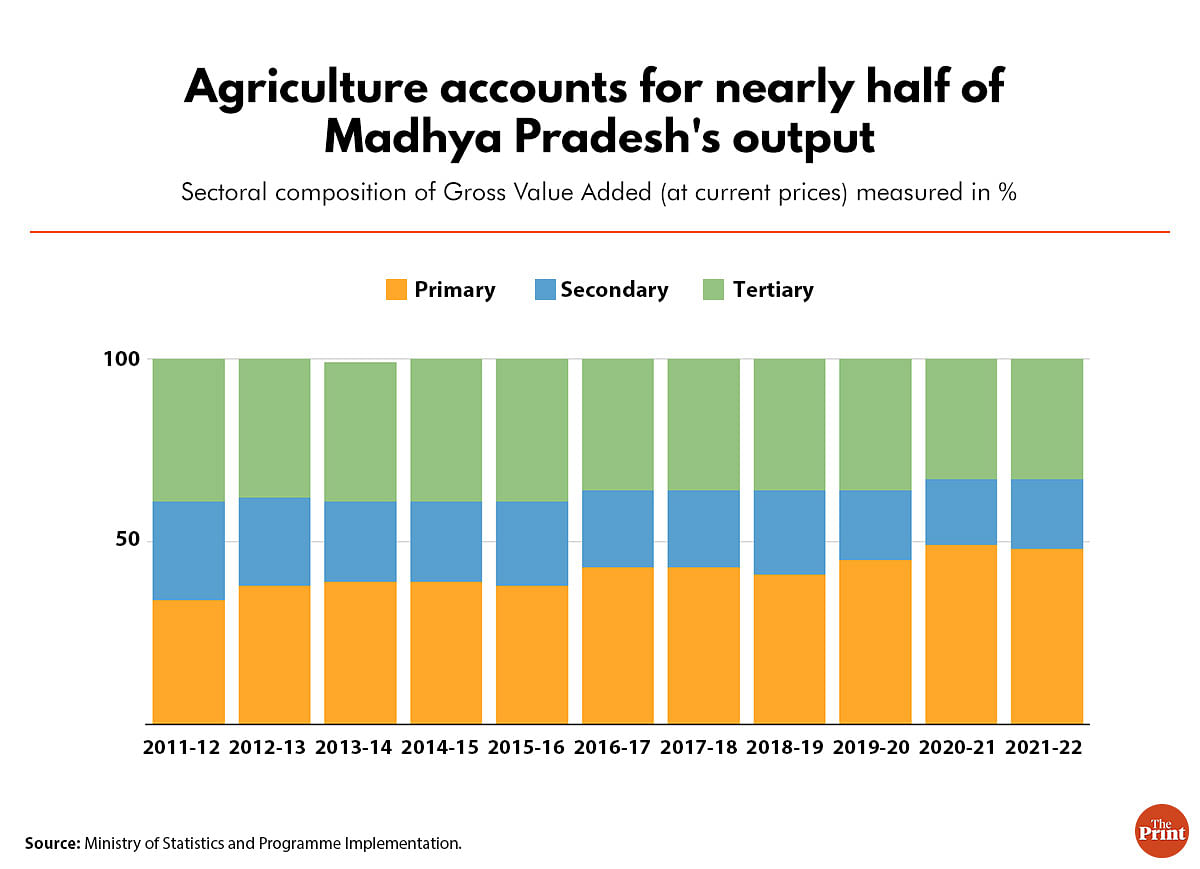
In the graph above, output attributable to agriculture is counted under the primary sector, while manufacturing falls under secondary and services under the tertiary sector.
According to the Ministry of Agriculture & Farmers Welfare, foodgrain production in the state doubled during this period. In 2011-12, the state cultivated around 149 lakh tonnes of foodgrains (rice, wheat, coarse cereals, pulses), which by 2021-22 had jumped to nearly 349 lakh tonnes — growth of almost 9.12 percent per annum compounded annually.
In contrast, none of its neighbours could emulate this success. Foodgrain production grew at 1.72 percent per annum in Gujarat, 1.58 percent in Uttar Pradesh, 1.02 percent in Rajasthan and 0.96 per cent in Maharashtra during this period.
Agricultural output also now accounts for a larger share of Madhya Pradesh’s income.
For every Rs 100 the state earned in 2011-12, industry accounted for Rs 27, while agriculture accounted for Rs 34. By 2021-22, the share of industry had dipped to Rs 19, while that of agriculture had risen to Rs 48 for every Rs 100 that the state earned.
But industry has lagged behind
In other words, the rapid pace of the growth of agriculture in Madhya Pradesh came at the expense of the other major income-generating sector — industry, which comprises manufacturing, construction and physical utilities such as electricity generation and gas.
Manufacturing, which is the backbone of industry, is a laggard in the state.
In terms of the growth of manufacturing output, Madhya Pradesh fares better than only one of its neighbours, Maharashtra, which saw growth of 3.32 percent per annum in this 10-year period as against Madhya Pradesh’s 6.22 percent. Manufacturing in Gujarat, on the other hand, grew by 10 percent each year over this decade, followed by Chhattisgarh (7 percent), Rajasthan (6.97 percent) and Uttar Pradesh (6.37 percent).
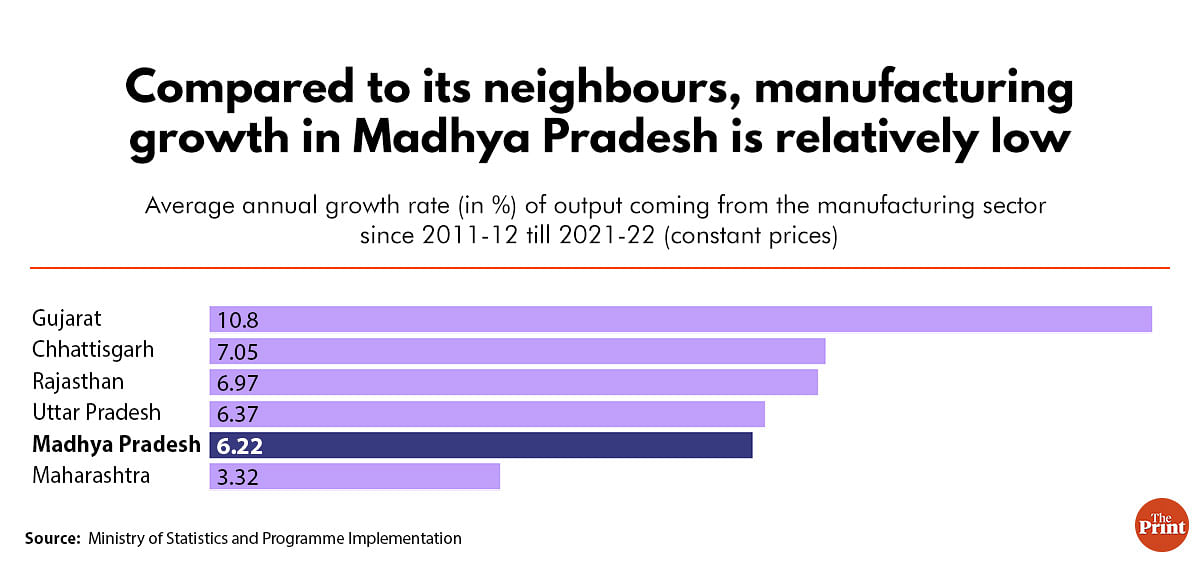
It is also worth mentioning that Maharashtra is a highly industrialised state, with industry accounting for 25 percent of its output as against 17 percent in Madhya Pradesh, besides a per capita income of Rs 2.1 lakh — double that of Madhya Pradesh.
Madhya Pradesh also fares relatively poorly on social development indicators, which could mean that the agriculture-led growth of the state’s GDP hasn’t necessarily resulted in improved quality of life for its people.
According to the National Family Health Survey (NFHS)-5 (2019-21), not even a third (29 percent) of women in Madhya Pradesh aged 15-49 had more than 10 years of schooling, compared to the national average of 41 percent. On this data point, Madhya Pradesh ranks lower than all its neighbours; in Maharashtra and Uttar Pradesh, the percentage of women who had completed more than 10 years of schooling stood at 50 percent and 39 percent respectively.
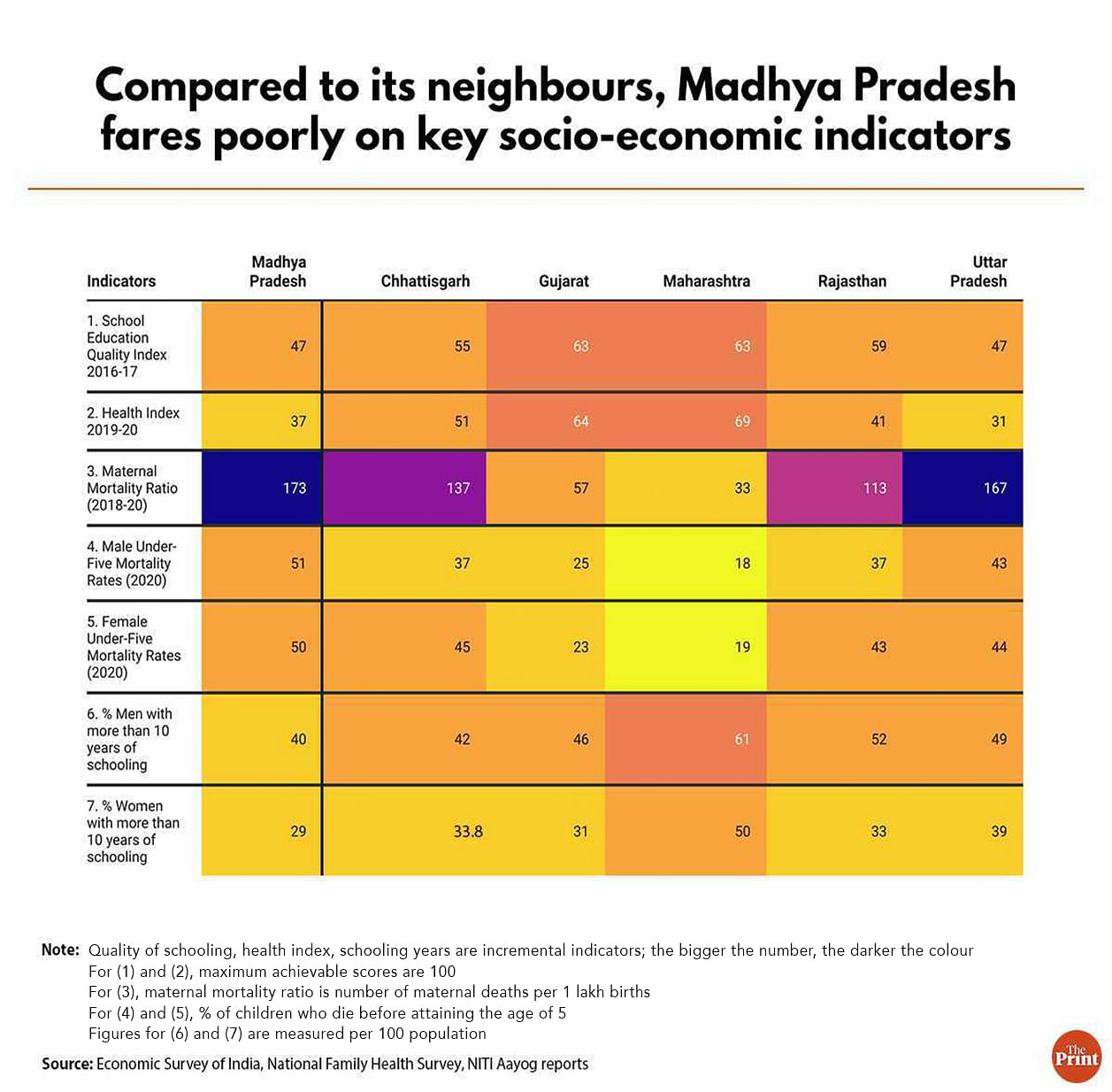
Compared to its neighbours, Madhya Pradesh has a relatively high maternal mortality ratio (number of deaths per 1 lakh live births) of 173, which is far above the national average of 97.
Moreover, it scored 37 in NITI Aayog’s 2019-20 Health Index, ranking above only Bihar and Uttar Pradesh. It also fared poorly in NITI Aayog’s 2016-17 School Educational Quality Index with a score of 47 — worse than all its neighbours.
(Edited by Amrtansh Arora)
Also Read: West Bengal economy’s fall has been stunning. Too obsessed with agriculture


